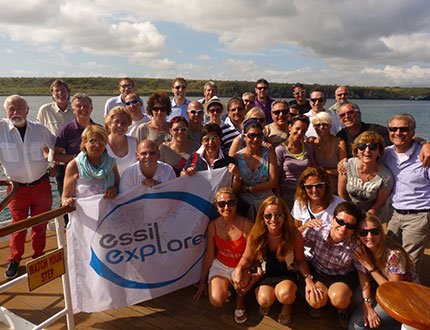
Ortocheratologia in primo piano a PhoenixClose-up of orthokeratology in Phoenix and Madrid
L'Accademia per l'occasione ha celebrato i suoi primi 10 anni di attività Esperti da tutto il mondo si sono incontrati dal 20 al 22 aprile scorsi a Scottsdale, presso Phoenix, in Arizona, per il congresso dell'Accademia Internazionale di Ortocheratologia. Nella stessa occasione l'Accademia Americana ha celebrato i suoi primi dieci anni di attività, durante i quali l'ortocheratologia è straordinariamente cresciuta in termini di diffusione e di reputazione scientifica. Dai dati riportati al congresso, si stima che nel mondo ci siano circa 420.000 persone che usano con successo l'ortocheratologia, la gran parte delle quali sono bambini e adolescenti, dato che l'indicazione principale per questa tecnica correttiva è diventato il controllo della progressione miopica. Dall'Italia sono intervenuti Marino Formenti, presidente dell'Accademia Europea EurOK che ha illustrato la situazione dell'ortocheratologia nel Vecchio Continente ed i prossimi programmi dell'Accademia Europea, mentre Antonio Calossi è stato apprezzato per il suo contributo clinico con una relazione sull'impiego dell'ortocheratologia in casi difficili e inusuali, come la correzione della miopia elevata, dell'ipermetropia, della presbiopia e dell'astigmatismo. For the occasion, the Academy celebrated its first 10 years of activity From April 20 through 22, experts from all over the world met in Scottsdale, near Phoenix Arizona, for the meeting of the International Academy of Orthokeratology. It was also the occasion for celebrating the American Academy's first ten years of activity, a period that has seen extraordinary growth in the spread and scientific reputation of orthokeratology. From the data presented during the meeting, it can be estimated that orthokeratology has been used successfully by about 420,000 people throughout the world, the majority of whom are children and adolescents, because this technique is indicated primarily for correcting progressive myopia. The speakers from Italy were Marino Formenti, president of the European Academy of Orthokeratology (EurOK), who described the orthokeratology situation on the Old Continent and the European Academy's impending programs, and Antonio Calossi, whose highly-regarded clinical contribution included a report on the use of orthokeratology for difficult and unusual cases, such as correcting high levels of myopia, hyperopia, presbyopia and astigmatism.



